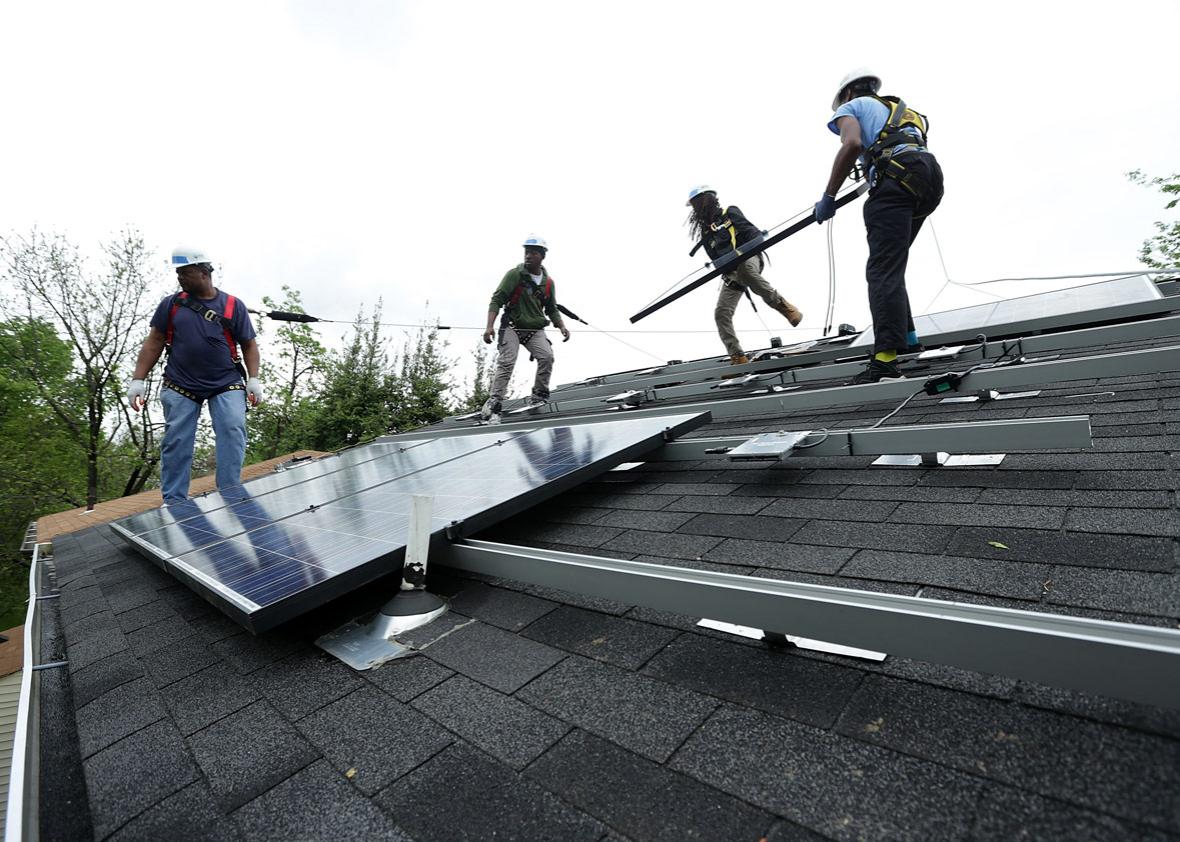Don’t boo. Vote. That was the line President Obama used on the campaign trail when audiences recoiled in horror at policy proposals they didn’t like. People shocked, annoyed, or distressed at President Trump’s decision to withdraw in several years (whatever that means) from the nonbinding Paris Agreement on climate change should follow similar advice. Don’t boo. Act.
Climate change seems to be the ultimate arena in which individual action, or even small-scale collective action, is futile. And it may be that even extremely aggressive coordinated movement at a national and global level won’t cool the planet. But the reality is that the individual actions of actors other than the federal government—consumers, companies, institutions, nonprofits, investors, state and local governments—will likely have far more short-term influence on limiting emissions than federal policy. Already, a kind of shadow climate government led by former New York City Mayor Mike Bloomberg is discussing submitting its own emissions plans for the United States to the United Nations.
That’s great. But the good news is that there is also plenty that individuals can do—as consumers, as employees, as citizens—to combat emissions in their own life and to provide the necessary financing and scale to sustainable industries so they can keep on their path. In fact, it’s never been easier, and the consumer has never had more choices—including choices that save money.
For example, if you’re one of the 17 million or so Americans who buy a new car each year—or one of those who buy used cars—you have an expanding array of increasingly affordable cars that use either no gasoline at all or very little. A few years ago there were Prius hybrids and the Chevrolet Volt. Today there are dozens of models of all-electrics, plug-in hybrids, and hybrids—at every price point and in virtually every vehicle class, from subcompacts to minivans. Even if you didn’t get on the wait list for a Tesla Model 3, you have a range of choices for low- or no-emissions cars, and your fellow taxpayers will heavily subsidize your purchase or lease. Earlier this week, I leased a Chevy Bolt—a vehicle that will be on the road for a dozen years and will never require a drop of gasoline (or an ounce of motor oil). While it will need plenty of electricity, my local utility currently gets about 40 percent of its supplies from no-emission sources.
Not in the market for a car? As your light bulbs die, replace them with LEDs. That may sound like the equivalent of the dumb personal financial advice to cut out lattes (or avocado toast) as a means to financial salvation. But the scale of energy use (and hence emissions) between LEDs and incandescent bulbs is so big—about 80 percent less—that wholesale switching can have a meaningful impact on the demand for electricity, and hence on emissions. Companies have led the charge, swapping in bulbs at their facilities with alacrity. But consumers have lagged. And, by the way, the more you buy, the more LEDs are produced, which brings the price down further.
Next, subscribe to solar. It may not be possible for you to put solar panels on your roof. But increasingly, consumers’ ability to access and consume emissions-free electricity doesn’t hinge on whether their own roofs are shaded or face south. Community solar, the process through which companies build solar farms and then sell a piece of the output to individual consumers, is a booming business. Utilities in 29 states are already offering such programs, with many more to come.
Read your employer’s sustainability report. If you work for a large company, chances are it has a sustainability effort that is both substantial and ongoing. At every large firm, there are now cadres of executives tasked with finding ways to save money by reducing the use of all resources—including energy—which has the salutary effect of reducing emissions. In this tight labor market, companies regard sustainability efforts as a key point of employee engagement and satisfaction. Which means many companies actively seek the input of their workers and support employee sustainability initiatives.
Go to meetings and run for office. A great deal of the actual activity that helps reduce emissions—covering landfills with solar panels, using procurement power to conjure up wind farms, replacing diesel buses with buses that run on electricity—happens at the local level. Governments, school boards, and public agencies have immense financial incentives to choose low- or no-emissions solutions, in part because they are cheaper and because there are a host of local, state, and federal programs that help support and subsidize them. Every public entity, no matter how big or small, has something to gain. And it doesn’t require making huge capital investments or living in a big city to take action. In Connecticut, a host of towns have banded together in so-called Solarize projects, in which neighbors enlist neighbors to commit to solar so that everyone can get a lower price.
So, yes, you can write your congressional representative or go to a march in Washington or donate to the Natural Resources Defense Council. All of those things are cathartic. But you could also nudge your neighbor who sits on the Planning and Zoning Commission and tell him the town should consider putting solar canopies on public parking lots. There may be no better place to start.
